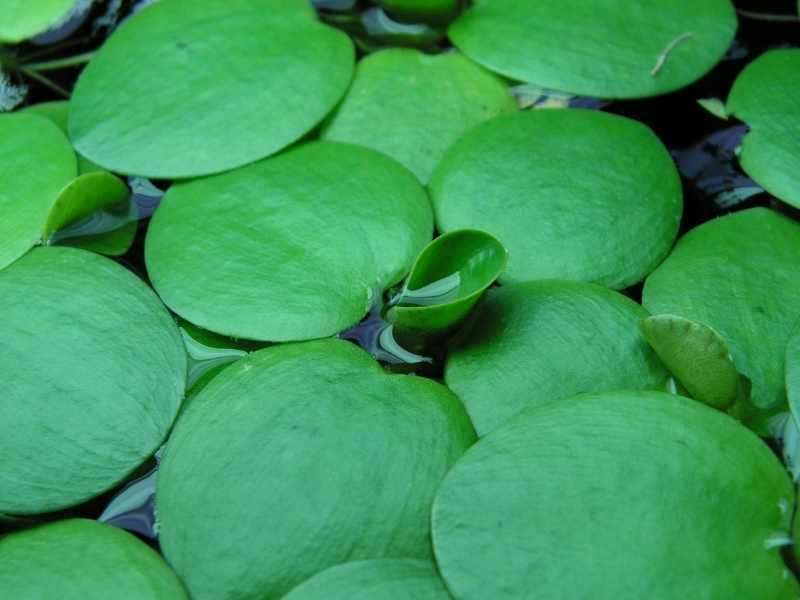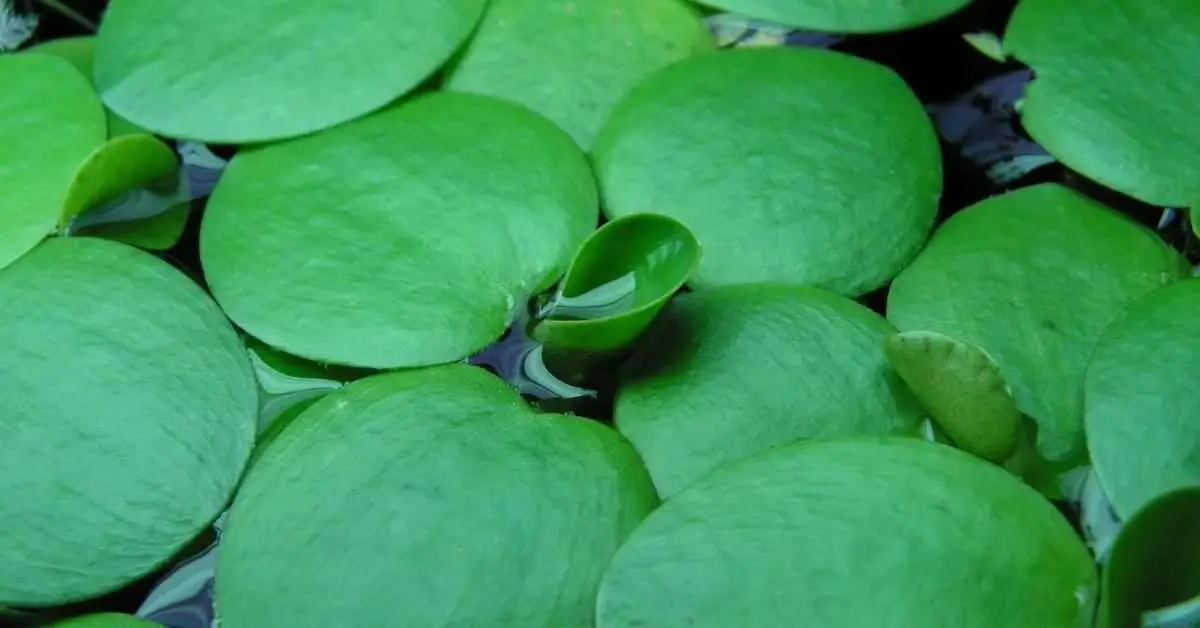Amazon frogbit plant-Limnobium laevigatum is a floating aquatic plant. They can be grown in any type of aquatic environment and will thrive in full sun or partial shade. It is also known as Amazon water-shield, floating water hyacinth, South American Spongeplant, Smooth frogbit and West Indian lily.
This plant is easy to care for and requires very little maintenance. In most cases, it will simply grow attached to the substrate at the bottom of the body of water in which it is planted. However, it can also be grown free-floating by attaching pieces of Styrofoam or other lightweight material to its stem. The Amazon frogbit produces small white flowers that are pollinated by bees and other insects.
You might also read: How to Care For Freshwater Aquarium Plants
Systematic Position
Kingdom: Plantae
Clade: Angiosperms
Order: Alismatales
Family: Hydrocharitaceae
Genus: Limnobium
Species: Limnobium laevigatum
Habitat
It is native to South America but has been introduced to other parts of the world including North America and Europe. Amazon frogbit has become a popular ornamental plant in the United States, Europe, and Asia. This plant can be easily identified by its large leaves that float on the surface of the water and its small white flowers. This awesome plant can be found in slow-moving or still water bodies such as ponds, ditches, and lakes.
Physical Appearance
The Amazon frogbit plant can grow up to 12 inches wide and they have a round, thin, white stem with rosette of floating leaves that are up to 3 inches wide that extend above the surface of the water. The leaves are round or kidney-shaped with long, slender petioles. Each leaf has three lobes and is 2-4 inches long.
They produce small and greenish-white and cup-shaped flowers that bloom from late spring to early summer and the fruit is a black berry. Amazon frogbit plants grow quickly and can cover the surface of the water, making it difficult for other plants to grow.

Amazon Frogbit Quick Facts
Scientific Name: Limnobium laevigatum
Common Name: Amazon water-shield, floating water hyacinth, South American Spongeplant, Smooth frogbit and West Indian lily
Growth Rate: Moderate to fast
Placement in Tank: Floating
Minimum Tank Size: 20 gallons
Lighting requirement: Medium to high
Water pH: 6.0 – 8.5
Water Temperature: 68 to 86 degrees Fahrenheit
Water Hardness: up to 10 dGH
Propagation: Through plantlets
Care level: Easy
Housing and Care Facts
Care and maintenance of Amazon frogbit is easy. This aquatic plant can be grown in either fresh or salt water and does not require a lot of light. In fact, it may do better in low-light conditions. To care for Amazon frogbit, simply add it to your tank and let it grow. It will attach itself to surfaces in the tank and reproduce quickly.
Water type, Temperature, Hardness, and pH are important factors to consider when caring for Amazon Frogbit in an aquarium. They can be grown in a wide variety of water conditions, and will thrive in both fresh and salt water. The plants do not require fertilization, but they will grow faster if you add some fish food to the water.
To keep your frogbit plants healthy, change the water regularly (every week or two), and trim any dead leaves or dying leaves. In this case, you should change at least 25% of the tank water every week. Amazon frogbit grows best in water temperatures of 68 to 86 degrees Fahrenheit and pH levels of 6.0 to 8.5. It requires moderate light levels but does not tolerate bright sunlight or strong currents.
It should be planted in nutrient-rich water with plenty of oxygenation, and it will spread rapidly to form dense colonies.
Propagation
In general, it reproduces by sending out runners that attach to the bottom of other plants or objects. These runners will produce new plants over time. In captive condition, Propagation of Amazon frogbit is a simple process that can be done by many ways.
The first step is to identify a healthy plant with at least two leaves. Next, cut off the stem below the leaves and remove any excess soil. Finally, place the cutting in water and wait for it to grow roots. Within a few weeks, the frogbit will be ready to transplant into a larger container or garden pond.
For better growth, the container should place in an area where it will receive sunlight. Sunlight helps the frogbit grow quickly and produces oxygen for fish living in an aquarium with frogbit.
Compatibility
Amazon Frogbit is an excellent choice for a tankmate because it does not compete with other plants for light or nutrients, and it provides shelter and spawning grounds for fish. Additionally, Amazon Frogbit helps to oxygenate the water and remove pollutants. It is also believed to have medicinal properties; therefore, it can be used as a natural treatment for various diseases in fish tanks.
Tankmates
Tankmates for Amazon frogbit can include other floating plants such as water lettuce (Pistia stratiotes), hornwort (Ceratophyllum demersum), or duckweed (Lemna minor). Other good tankmates include small fish such as guppies or tetras, shrimp, and snails.
Benefits
Amazon frogbit plants are a great addition to any aquarium. They are easy to care for and provide many benefits for the fish in the tank.
Aquarium enthusiasts have been adding Amazon frogbit to their tanks for years because of its unique and beneficial properties. It is a floating aquatic plant that grows quickly in all types of water, making it perfect for aquariums. It helps to oxygenate the water and stabilize the pH level, which makes it an ideal plant for beginners.
They can be used as a food source for fish, and they add interest and beauty to the fish tank. It also provides shelter for fish. Additionally, this plant can help to control algae growth in the aquarium.
They also have basic functional benefits. It also has several aesthetic advantages. Its bright green leaves add color and life to any tank, and as it grows taller, it provides shade for fish. The large white flowers that bloom on top of the plant are also attractive additions to any tankscape.
The broad leaves provide plenty of shade, which helps keep the water cool. In addition, the leaves are covered in tiny hairs that trap organic matter and debris, helping to clean the water.
It can be used as a natural filter for ponds and lakes, removing excess nutrients and pollutants from the water.
It can also be used as a decorative accent piece in any aquarium setting or it can be used to provide cover for fish fry or other small aquatic creatures.
The roots of Amazon frogbit also help stabilize pond bottoms by forming colonies that trap sediment particles.
Some Problems with Amazon Frogbit
Although Amazon Frogbit is attractive and easy to care for, it can cause problems in waterways. The plants reproduce by fragmentation; when a stem or leaf breaks off from the main plant it will form a new one. This makes it very difficult to control once it becomes established in a body of water.
The plants can clog irrigation systems, impede boat traffic, and reduce oxygen levels in the water which can harm fish and other aquatic organisms. In some cases, they have even been known to form thick mats that block sunlight from reaching underwater plants causing them to die.
Frogbit may also serve as a breeding ground for mosquitoes which can spread disease such as West Nile virus.
Diseases
Diseases of Amazon Frogbit can include a number of different problems, from bacterial and fungal infections to viral diseases. The most common disease affecting Amazon Frogbit is red edge, caused by the bacterium Pseudomonas fluorescens. This disease causes the leaves of the plant to turn reddish-brown and then die. Other diseases that can affect Amazon Frogbit include:
-Fungal infection (e.g., Pythium or Phytophthora spp.): These infections cause water-soaked lesions on leaves and stems, which may lead to plant death.
-Bacterial leaf spot (e.g., Xanthomonas campestris pv. vesicatoria): This bacteria causes small, black spots on the leaves of plants that often grow in clusters. The spots may enlarge and merge, resulting in large areas of dead tissue on the leaves.
-Viral diseases (e g., frog virus 3 or FV3): These viruses are often spread through contact with infected frogs or tadpoles, and can cause extensive damage to frogbit populations.
While there is no cure for these diseases, they can be controlled through the use of fungicides or antibiotics if they are traced early enough. If left untreated, however, these diseases will often kill the plant.
Concluding Remarks
Most importantly, frogbit is a safe plant that does not harm fish or other aquatic creatures. In fact, many people believe that frogbit actually has positive effects on fish health by providing them with food and shelter. So if you’re looking for an easy-to-grow floating plant that will improve the appearance and function of your aquarium, be sure to add some Amazon frogbit.
You might also read: Bolivian Sword-Helanthium bolivianum

